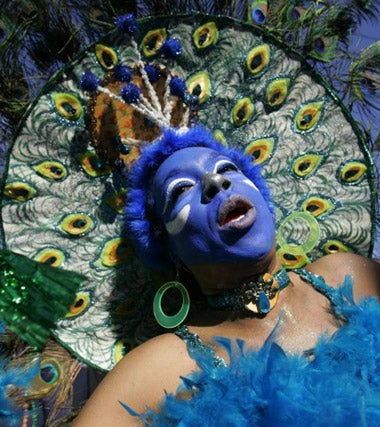Mardi Gras takes New Orleans by storm

Six months after the greatest cataclysm in its history, a battered yet defiant New Orleans rounded out a Mardi Gras season with the traditional show of drunkenness and licence - but it was stalked by the memories and reminders of Hurricane Katrina.
Along Bourbon Street and throughout the French quarter, revellers celebrated "Fat Tuesday" as parades wended their way through the streets.
Many of the displays mocked the federal and local governments for their botched response to the crisis. Some of the floats still carried the marks of the storm that hit on 28 August, their paint flaking, and with water marks visible.
But for one day, that misery was put to one side. Large crowds watched as the festivities unfolded, led in the parades by Zulu Social Aid and Pleasure Club, the most venerable predominantly black carnival club in New Orleans, and by Rex, the traditional king of Carnival.
But this 150th anniversary of the city's first Mardi Gras could not escape the shadow of Katrina. Just blocks away from the show begins the wasteland left by the hurricane. All the gaiety of the locals could not obscure the fact that the city's population is less than half what it was.
Decked in military garb and riding a horse, Mayor Ray Nagin claimed the crowds were "absolutely comparable in size" to years gone by. "To all the New Orleanians who are not here, we are having this one for you," he declared.
But this was no ordinary Mardi Gras. Later in the day, the revels halted for a moment of silence, followed by a peal of church bells, to commemorate the victims - more than 1,300 in all, in the city and in communities obliterated along the nearby Gulf coast. Four-fifths of New Orleans was ruined by the floods. For all the good intentions of authorities, some of the destroyed neighbourhoods probably will never be rebuilt.
But the musical soul of the city still beats. Fats Domino, the rhythm and blues legend and lifelong resident of New Orleans, had to be rescued by helicopter from his flooded home after Katrina struck. Now he is releasing his first new album since 1993.
Join our commenting forum
Join thought-provoking conversations, follow other Independent readers and see their replies
Comments